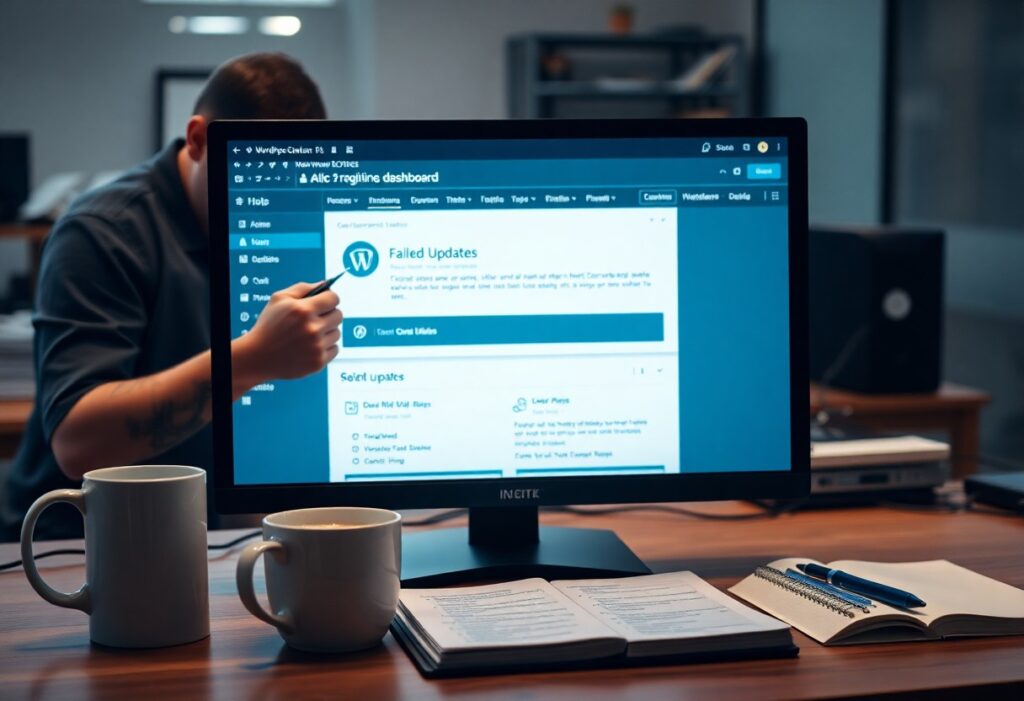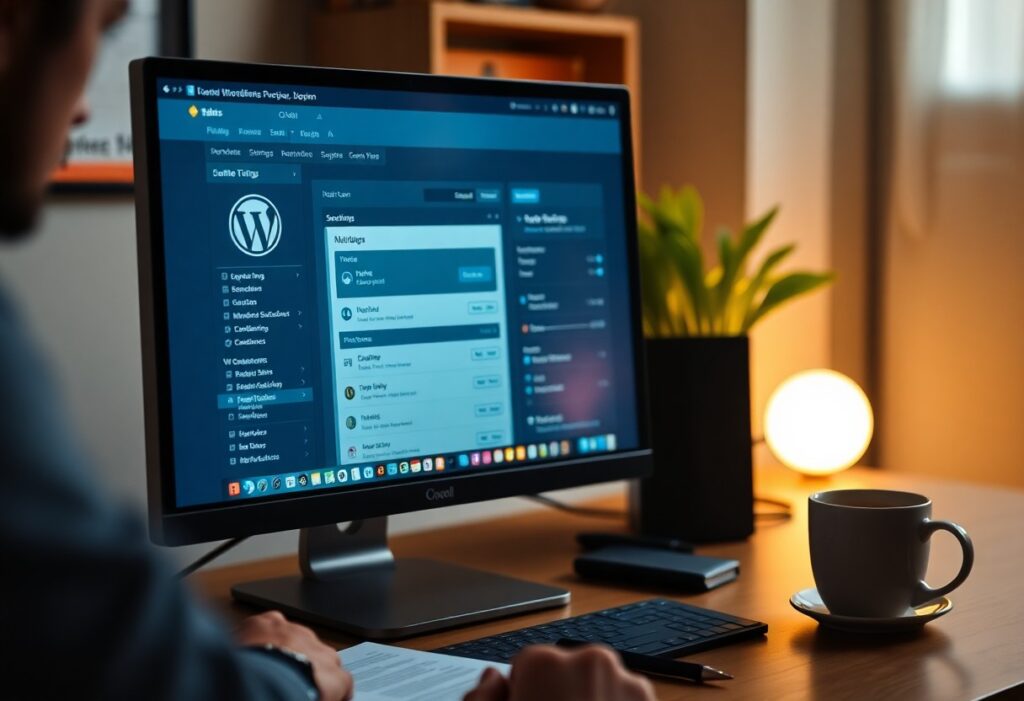You can enhance your agency’s efficiency by mastering the art of scaling your Elementor builds. As you juggle multiple clients, it’s vital to implement strategies that streamline your workflow and maintain high-quality standards. In this guide, you will discover practical tips and tools that will enable you to create efficient, repeatable processes for your Elementor projects, allowing you to save time and maximize profitability. Let’s probe the key techniques that will transform your agency’s approach to building with Elementor.
Maximizing Elementor’s Core Features for Agency Workflows
Streamlining Design Processes with Templates
Utilizing Elementor’s templating system allows you to create a library of designs that can be reused across different projects. By designing a set of core templates for headers, footers, and specific page layouts, you can dramatically decrease the time spent on each new project. For instance, establishing a uniform template structure for your clients not only speeds up the design process but also ensures brand consistency across their websites. This can be especially useful when rebranding clients, as simply swapping in new content and styles can refresh their entire site without starting from scratch.
Additionally, Elementor’s ease of use allows you to tailor templates for individual clients, adjusting elements to meet specific brand guidelines or preferences. When you have a solid base template, it’s straightforward to clone or modify it for new projects. This is an invaluable time-saver, enabling you to focus more on creative aspects rather than getting bogged down in repetitive setup tasks. The incorporation of dynamic content can further enhance these templates, providing clients with a more personalized experience that maintains efficiency in your workflow.
Leveraging Reusable Elements for Consistency
Elementor’s reusable elements—also known as Elementor Templates—are key to maintaining a cohesive look and feel throughout various projects. These elements could range from commonly used sections, like testimonials or FAQ blocks, to specific design components, such as call-to-action buttons and icons. By saving these reusable elements, you can ensure that they conform to brand standards and color schemes, maintaining not just visual unity but also facilitating faster updates across client sites. For example, if a client decides to change their logo or brand color, updating it in one place will automatically reflect across all instances of that reusable element.
Using these reusable elements can substantially reduce the time spent revising individual pages or designs, allowing you to maintain quality across all projects effortlessly. Familiarization with how to implement global widgets can take your agency’s efficiency to another level, freeing up your time for strategic planning and creative exploration rather than repetitive design tasks. As you build out your library of reusable elements, scalability becomes not just an aspiration but a reality, enabling you to handle more clients and projects with confidence.
Mastering Customization for Diverse Client Needs
Understanding the unique needs of each client is vital in delivering personalized digital experiences. You can leverage Elementor’s extensive customization features to craft designs that reflect your clients’ brands and resonate with their target audiences. Take a good look at your client’s industry, user demographics, and business goals. This analysis allows you to create a tailored approach that meets specific needs while still maintaining efficiency in your workflow. Utilizing the Elementor Theme Builder, for instance, can help you develop a cohesive look across various parts of the website, ensuring consistency while still accommodating individual client preferences.
Creating Dynamic Content for Tailored Experiences
Dynamic content transforms a generic website into a personalized experience, enhancing user interaction and engagement. By integrating tools such as Advanced Custom Fields (ACF) or Pods with Elementor, you can easily create dynamic templates that display content specific to each user or page. For example, if you’re working with a real estate client, you can set up property listings that showcase relevant data—such as images, prices, and descriptions—based on the listings’ parameters. This approach allows you to build highly tailored experiences, driving up user satisfaction and retention.
Utilizing Custom CSS and Scripts Effectively
To achieve sophisticated designs that stand out, implementing custom CSS and scripts can be a game-changer. You can adjust the design parameters beyond what Elementor offers out of the box, allowing for a unique touch that aligns with your clients’ branding. For instance, if a client has a specific color palette or font style that isn’t readily available, you can incorporate custom CSS in Elementor’s Custom CSS field to achieve the desired look. This not only enhances aesthetic value but also elevates the website’s functionality, letting you implement responsive design features that improve the user experience across all devices.
Moreover, performance is critical—too much custom code can slow down your site. Keep your scripts organized and documented, and test them rigorously to ensure everything functions smoothly. Utilizing tools like WP Asset Clean Up can help you manage when and where scripts are loaded, preventing unnecessary bloat. Staying efficient with your custom CSS and scripts also means being mindful of your clients’ varying needs, adjusting your coding approach accordingly—all while maintaining top-notch site performance.
Optimizing Performance for High-Traffic Sites
Implementing Best Practices for Speed and Efficiency
For high-traffic sites, performance optimization is non-negotiable. Begin with minimizing HTTP requests by consolidating files such as CSS and JavaScript. Utilize tools like Gzip compression to reduce the size of files sent over the internet. Implementing caching strategies significantly cuts down load times, ensuring that returning visitors enjoy a seamless experience. You can leverage plugins such as WP Rocket or W3 Total Cache that simplify the caching process. Always assess your site’s current performance using tools like Google PageSpeed Insights or GTmetrix to track improvements and identify further enhancements.
Images can account for up to 60% of a webpage weight; thus, employing appropriate formats like WebP or compressing images with tools like Imagify can provide substantial speed gains. Additionally, establish a Content Delivery Network (CDN) to distribute content globally, further enhancing load speeds for users regardless of their geographic location. By adhering to these best practices, your site’s performance can significantly improve, leading to better user satisfaction and higher conversion rates.
Choosing the Right Hosting and Infrastructure
The choice of hosting is foundational to a high-traffic site’s performance. Opting for a managed WordPress hosting provider equipped to handle spikes in traffic can make the difference between a smooth browsing experience and potential downtime. Shared hosting may save costs initially, but it often leads to slower load times and limited resources. Providers like Kinsta or WP Engine specialize in WordPress, offering robust solutions optimized for Elementor builds, ensuring that your sites remain responsive under pressure.
Evaluate server locations relative to your target audience, as proximity plays a significant role in loading times. A solid infrastructure includes not only high-performing servers but also scalability options to quickly increase resources during critical traffic moments, such as product launches or sales events. Integrated features such as automatic backups and SSL certificates also streamline processes and enhance security across your agency’s websites.
Investing in an effective hosting environment pays off—research shows that just a one-second delay in page load time can result in a 7% reduction in conversions. By prioritizing reliable hosting solutions, you not only enhance user experience but also position your agency as a provider of high-quality services that cater to a demanding clientele.
Collaborating Seamlessly with Teams
Setting Up Role Management for Multiple Users
Establishing a clear hierarchy through role management enables you to optimize collaboration among team members while protecting your projects from risks associated with unauthorized access. In the WordPress dashboard, you can easily assign different roles—Administrator, Editor, Author, Contributor, or Subscriber—depending on the responsibilities of each team member. For instance, providing editing capabilities to your designers while restricting access to developers ensures that everyone can contribute without overlapping roles. Utilizing plugins like User Role Editor or Members can enhance this functionality, showing advanced control over permissions suited to your agency’s workflow.
Consider creating custom roles that incorporate your specific needs. You might want to develop a ‘Designer’ role that enables certain capabilities while disabling admin access. Such tailored configurations not only boost security but also streamline contributions, enabling your team to focus on their respective tasks without the clutter of unnecessary options. This organized approach removes bottlenecks in workflow and allows for greater creative freedom, ultimately enhancing productivity across your projects.
Integrating Elementor with Project Management Tools
Leveraging project management tools like Asana, Trello, or Monday.com in conjunction with Elementor can significantly improve communication and streamline the project lifecycle. You can automate updates and task assignments based on progress within your Elementor build, ensuring that everyone stays aligned from design inception to final launch. For example, integrating pull requests within your project management tools enables you to seamlessly track feedback and revisions while centralizing discussions around particular aspects of a build.
Your team can also benefit from using dedicated communication channels, such as Slack or Microsoft Teams, that integrate with these project management tools. This cohesive environment allows for real-time discussions alongside project progress updates, making it easier to resolve design challenges or accelerate project timelines. By connecting these tools to your Elementor workflows, you create a transparent, accountable, and efficient process that enhances teamwork while effectively managing multiple client builds.
Automating Repetitive Tasks for Efficiency
Streamlining your workflow is an necessary strategy to maximize productivity when managing multiple clients with Elementor. By automating repetitive tasks, you free up time that can be better utilized for more creative aspects of web design and client engagement. You might find it beneficial to incorporate tools like Zapier or Integromat to connect Elementor with other applications, automating tasks such as sending client notifications or updating spreadsheets whenever you publish new content. This eliminates the need for manual updates, reduces the potential for errors, and allows your team to focus on innovation rather than admin work.
Using Elementor Add-ons and Integrations
Elementor’s extensive ecosystem of add-ons and integrations offers a wealth of opportunities to enhance your workflow. Popular choices such as Essential Addons or JetEngine provide additional widgets and functionalities that can save you hours of development time. For instance, you can quickly implement complex design features or create advanced custom fields without having to write a single line of code. These tools also come with preset designs that can be easily adapted to fit your client’s branding, ensuring consistency across projects.
Exploring Shortcuts and Workflow Enhancements
Shortcuts play a vital role in speeding up your Elementor experience, allowing you to navigate the platform more efficiently. Familiarizing yourself with keyboard shortcuts, for example, can significantly decrease your editing time. Actions like duplicating elements with just a keystroke or quickly opening the global settings can enhance your productivity dramatically. You might also consider creating reusable templates for repeated elements or sections across different projects; this not only fast-tracks the design process but also ensures branding consistency for your clients.
In addition to using built-in shortcuts, tools like Gutenberg blocks can be integrated into your Elementor workflow, allowing you to leverage the strengths of both platforms together. Using a combination of Elementor’s drag-and-drop capabilities with Gutenberg’s structured content blocks creates a hybrid approach that boosts efficiency and organization. Not only does this method save time, but it also enhances your team’s overall productivity by minimizing the learning curve for new team members who might be more familiar with either platform. Consider implementing these innovative techniques to refine your process further and stay ahead in the competitive landscape of web design.
Conclusion
Presently, as you look to scale your Elementor builds across multiple clients, leveraging the right strategies can significantly enhance your workflow and overall productivity. By implementing a systematic approach, such as utilizing templates, managing your assets effectively, and keeping your projects organized, you can streamline the development process. It’s vital to create a solid framework that allows you to leverage your previous work, enabling you to deliver high-quality results consistently while saving time and effort in the long run.
Moreover, fostering a robust client relationship is vital as you expand your agency. Communication, transparency, and understanding client needs will not only help you maintain current partnerships but also attract new ones. As you continue to hone your skills in managing and scaling Elementor builds, you’ll find that your ability to meet diverse client expectations will lead to an enhanced reputation and potentially increased business opportunities. Embrace this growth phase and use the tools at your disposal to make your agency thrive with Elementor.
Q: What are some best practices for scaling Elementor builds for multiple clients?
A: When scaling Elementor builds for agencies and multiple clients, it is vital to establish a systematic approach. Start by creating a template library that houses reusable sections, headers, and footers tailored for different industries. This will allow you to rapidly deploy designs across various client projects. Additionally, make use of global widgets—these can be reused in different parts of your designs and will save time on edits. Implementing consistent workflows and utilizing custom post types will also help streamline your process, ensuring that you can efficiently manage multiple client sites without compromising on quality.
Q: How can I efficiently manage updates across multiple Elementor sites?
A: Efficiently managing updates across multiple Elementor sites involves utilizing a WordPress management tool. Services like MainWP, ManageWP, or InfiniteWP allow you to perform bulk updates for themes, plugins, and WordPress core installations from a single dashboard. This saves time and ensures that all your client sites are running the latest version of Elementor. Additionally, consider creating a staging environment for testing changes before deploying them to live sites. Regularly scheduled maintenance checks and monitoring for plugin conflicts are also vital in ensuring smooth operations across all projects.
Q: What strategies can I use to enhance the performance of Elementor websites for my clients?
A: Enhancing the performance of Elementor websites involves a combination of optimization techniques. First, ensure that your images are appropriately sized and compressed before uploading to reduce loading times. Utilize caching plugins, such as WP Rocket or W3 Total Cache, to serve cached versions of your pages for faster access. Additionally, assess and minimize the number of plugins used, keeping only those vital for the site’s functionality. Optimize your database regularly to remove unnecessary data, and use a content delivery network (CDN) to expedite global access. These strategies will help deliver a smoother experience for end-users while keeping your client sites efficient and responsive.




